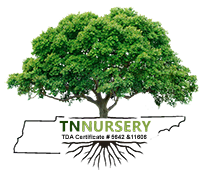Coneflower Plants
Coneflowers, or Echinacea, belong to the Asteraceae family. These striking perennials are native to North America and are known for their unique cone-shaped centers surrounded by colorful petals. Coneflowers are beloved for their aesthetic appeal, medicinal properties, and ecological importance.
One of the most notable features of coneflowers is their striking appearance. The prominent, cone-shaped center, from which the name derives, comprises numerous tiny disc florets. Surrounding this central cone are vibrant, daisy-like ray florets in various colors, including shades of pink, purple, white, and yellow. This unique flower structure makes coneflowers a standout addition to any garden or landscape.
Coneflower Plants Offer Visual Appeal
Beyond their visual appeal, coneflowers have a rich history of medicinal use. Indigenous peoples of North America, such as the Plains Indians, have long utilized various species of Echinacea for their purported health benefits. Traditionally, coneflowers treated multiple ailments, including infections, wounds, and snakebites. Today, Echinacea is a popular herbal remedy believed to support immune function and alleviate symptoms of the common cold and flu.
In addition to their medicinal properties, coneflowers play a vital role in supporting pollinators and biodiversity. The nectar-rich flowers attract diverse pollinators, including bees, butterflies, and hummingbirds, making them an essential food source for these creatures. By planting coneflowers in gardens and natural landscapes, individuals can contribute to the conservation of pollinator populations and promote overall ecosystem health.
Coneflowers are also valued for their resilience and low maintenance requirements. These hardy perennials are well-suited to various growing conditions, including sunny to partially shaded areas with well-draining soil. Once established, coneflowers are drought-tolerant and relatively resistant to pests and diseases, making them an excellent choice for beginner gardeners and landscaping projects.
Furthermore, coneflowers are highly versatile plants that can be incorporated into various garden styles and designs. Whether planted en masse in a meadow-style planting or mixed with other perennials in a cottage garden border, coneflowers add visual interest and charm to any landscape. They also make excellent cut flowers, providing long-lasting blooms for floral arrangements and bouquets.
Coneflower Plants Benefits
In conclusion, coneflowers are more than just beautiful garden plants; they are valuable contributors to human health and ecological well-being. With their stunning flowers, medicinal properties, role in supporting pollinators, and adaptability to diverse growing conditions, coneflowers hold a place of prominence in gardens and landscapes worldwide. Whether admired for their beauty or utilized for their medicinal benefits, these resilient perennials continue to captivate and inspire gardeners and nature enthusiasts alike.
 " alt="Featured Collection Perennials " />
" alt="Featured Collection Perennials " />

 " alt="Featured Collection Ferns " />
" alt="Featured Collection Ferns " />
 " alt="Featured Collection Live Moss " />
" alt="Featured Collection Live Moss " />
 " alt="Featured Collection Trees " />
" alt="Featured Collection Trees " />
 " alt="Featured Collection Shrubs " />
" alt="Featured Collection Shrubs " />
 " alt="Featured Collection Vines " />
" alt="Featured Collection Vines " />
